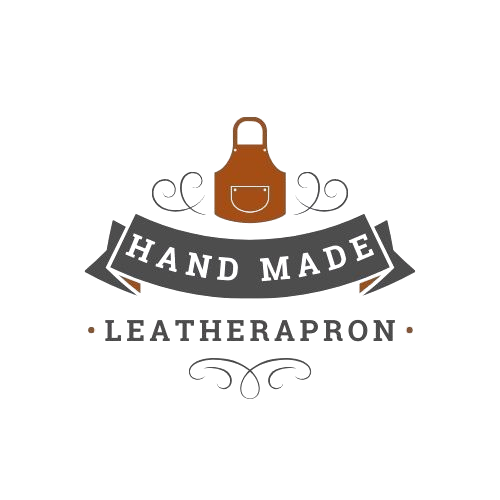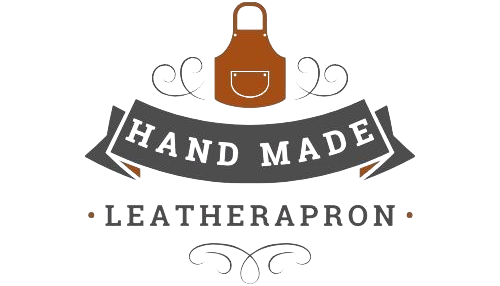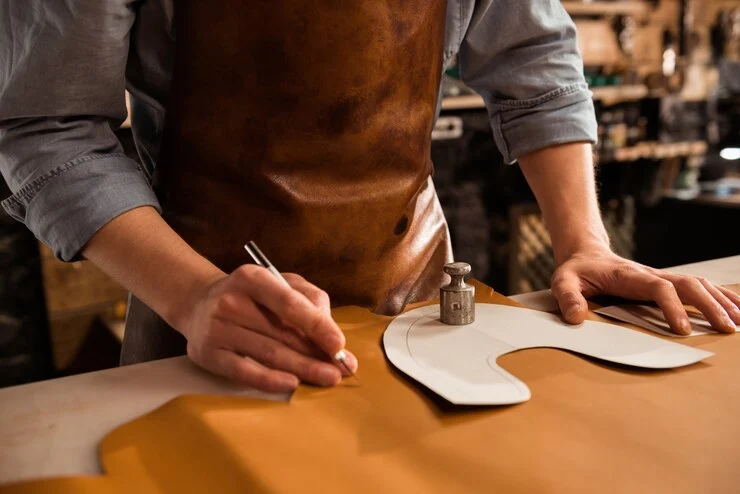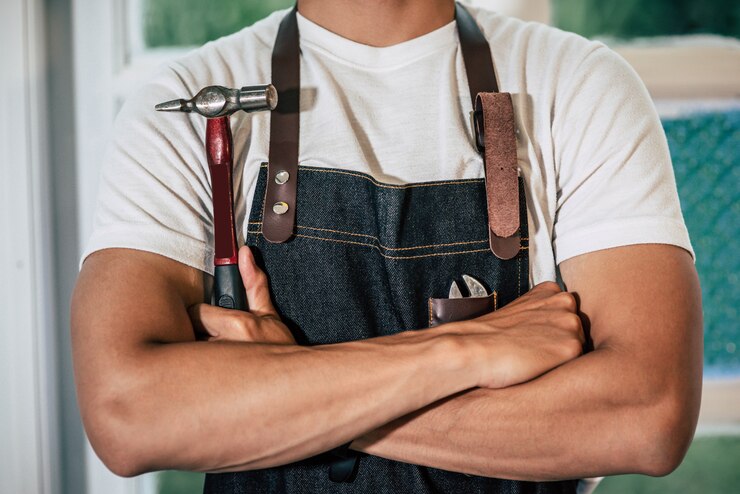What Is the Use of a Leather Apron in Welding?
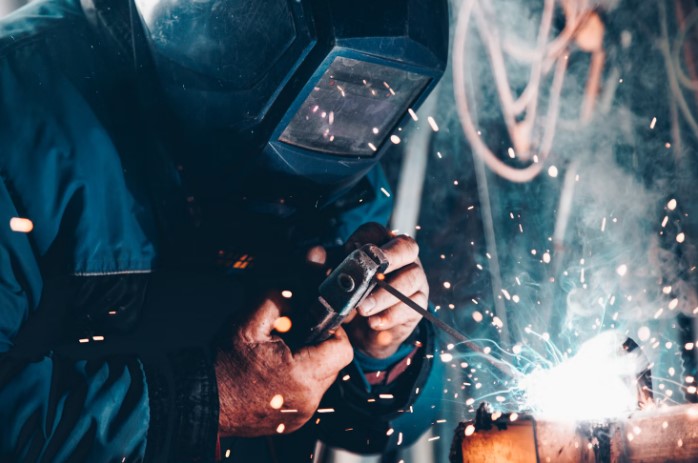
Introduction
One of the most difficult and dangerous jobs is welding, which involves molten metal, sparks, and intense heat. Welders run the risk of suffering severe injuries like burns, wounds, and radiation exposure if they don’t take the right precautions.
Welders use specialized protective equipment, such as helmets, gloves, boots, and fire-resistant clothes, to reduce these dangers. The leather apron is one of the most important pieces of safety gear among these, offering improved defense against heat, sparks, and flying debris.
An excellent leather apron or blacksmith apron protects the welder or blacksmith from potentially harmful substances, reducing the risk of burns and other injuries. Welders and blacksmiths can operate effectively without sacrificing their safety because of the apron’s long lifespan, fire resistance, and ergonomic design, making it a crucial component of both welding and blacksmithing safety equipment.
Why Do Welders Wear Leather Aprons?
Protection Against Sparks, Heat, and Molten Metal
Molten metal, flying sparks, and extreme heat are all produced during welding and can result in serious burns and injuries. By acting as a shield, a leather apron keeps these dangerous substances from getting to the welder’s body. Leather is a great option for mitigating the risks associated with welding because it doesn’t melt or burn as easily as synthetic materials do.
Durability and Fire-Resistant Properties of Leather
Leather is one of the most resilient materials for protective clothing because it is thick, sturdy, and fire-resistant by nature. Welders frequently operate in challenging conditions where they are frequently exposed to heat and sharp items. Unlike fabric-based alternatives, a leather apron can endure harsh environments and provide long-lasting protection. It is also resistant to deterioration, which makes it an economical investment for welders.
Comfort and Flexibility for Long Working Hours
Although safety comes first, comfort is just as crucial for long-shift welders. With a well-made leather apron, welders may move freely without feeling constrained since it strikes a balance between protection and movement. Numerous aprons are lightweight and include adjustable straps for a comfortable fit over time. Additionally, leather gradually conforms to the body, improving range of motion and flexibility when welding.
Key Benefits of Using a Leather Apron in Welding
Heat and Flame Resistance
Extreme temperatures produced by welding present a significant danger of burns. By acting as a heat barrier, a leather apron shields the welder’s legs and body from intense heat. Leather provides dependable protection against unintentional contact with hot surfaces or flames since it does not melt or catch fire as easily as synthetic fabrics do.
Spatter and Debris Protection
Sparks, drops of molten metal, and pieces of metal fly everywhere when welding. These risks can result in excruciating burns and wounds if suitable protection is not worn. In addition to reducing accidents and preventing the welder’s clothing from burning or being damaged, a leather apron effectively blocks welding spatter.
Durability and Longevity
Leather is renowned for its remarkable durability and strength. Even under the most extreme welding conditions, a leather apron retains its integrity, unlike synthetic aprons that can shred or deteriorate rapidly in hot environments. Welders can avoid frequent replacements because of their long-term protective solution and resistance to wear and strain.
Enhanced Mobility
A properly fitted leather apron is made to be flexible while offering the highest level of protection. Leather aprons facilitate seamless mobility without limiting it, which is essential for welders who must be able to move freely while working. Many aprons have split legs and adjustable straps, which improve comfort and versatility for various welding positions.
Cost-Effectiveness
Despite initially costing more than fabric options, leather aprons are a wise investment due to their protective and long-lasting nature. High-quality leather aprons don’t need to be replaced as often because they last for years. Welders are also spared from extra expenses associated with medical bills and ruined clothing by preventing accidents and safeguarding work clothes.
Types of Leather Aprons for Welders
Depending on their welding methods and work environment, welders have varying needs. Selecting the appropriate kind of leather apron guarantees the best possible comfort and protection. The three primary kinds of leather aprons used in welding are listed below:
Full-Length Leather Apron
For high-risk welding occupations where exposure to heat, sparks, and molten metal is continual, a full-length leather apron offers comprehensive protection from the chest to the knees.
Best for: High-temperature conditions, industrial applications, and heavy-duty welding.
Benefits:
- Protects the body’s entire front against burns and debris.
- Maximum fire and heat resistance with thick, long-lasting leather.
- Straps that may be adjusted for a snug and comfortable fit.
Split-Leg Leather Apron
Welders who require increased mobility while preserving protection are the target audience for the split-leg leather apron. Because it has two distinct leg coverings, welders can work in seated or crouching positions with freedom of movement.
Best for: often moving work, TIG welding, and pipe welding
Benefits:
- Greater flexibility for improved leg movement and mobility.
- Improves ventilation while protecting the upper and lower bodies.
- Perfect for welders working on intricate jobs or in tight places.
Bib-Style Apron with Pockets
Welders can keep welding rods, minor accessories, or other tools in the built-in pockets of a bib-style leather apron for easy access. Welders who handle several tools while working favor this style of apron because it blends ease with protection.
Best for: Workshops, do-it-yourself projects, and light to medium-duty welding.
Benefits:
- Simple tool access without requiring a separate tool belt.
- Offers adequate protection for the torso and chest.
- Comfortable and lightweight for extended workdays.
The type of welding work, mobility requirements, and necessary level of protection all influence which of these aprons is best for you.
How to Choose the Right Leather Apron for Welding
When welding, choosing the appropriate leather apron is essential to guarantee optimal protection, comfort, and durability. The following are the main things to think about when choosing:
Thickness and Quality of Leather
The degree of protection provided by leather aprons varies. The leather’s endurance and heat resistance are determined by its thickness and quality.
- Top-Grain Leather: It is appropriate for the majority of welding tasks because it strikes a balance between flexibility and durability.
- Full-Grain Leather: The thickest and strongest choice, offering the most longevity and fire resistance.
- Split Leather: An affordable substitute that provides decent protection, although it could deteriorate more quickly over time.
For optimal protection during high-intensity welding, choose a full-grain or thick top-grain leather apron.
Adjustability and Comfort
Comfort should not be sacrificed for protection when wearing a welding apron. An ergonomic design and adjustable straps are necessary to guarantee a tight but comfortable fit.
- Cross-back straps: By uniformly distributing weight across the shoulders, lessen the pressure on the neck.
- Padded shoulder straps: Improve comfort during extended welding sessions.
- Waist adjustments: Make sure welders of different sizes can fit snugly.
When welding, a well-fitted apron reduces discomfort and improves movement.
Added Features
Certain leather aprons have extra characteristics that improve their usefulness and robustness.
- Multiple pockets: Permit welders to keep welding rods, accessories, and small tools in storage for easy access.
- Reinforced stitching: The apron’s lifespan is increased and strength is increased with heavy-duty Kevlar stitching.
- Flame-resistant linings: Add another layer of defense against sparks and heat.
Selecting a premium leather apron that offers the ideal balance of comfort, durability, and extra features guarantees improved welding safety, effectiveness, and long-term value.
Proper Maintenance and Care of Leather Aprons
A leather apron that is kept up will last longer and continue to offer the best protection possible during welding. Maintaining the apron in optimal condition requires timely replacement, appropriate storage, and routine cleaning.
Cleaning and Conditioning Tips to Prolong Lifespan
To avoid drying out, cracking, or stiffening over time, leather needs to be properly cared for. To maintain your apron in good condition, do the following:
- Remove dust and debris: After every use, gently brush or wipe the apron with a dry cloth.
- Clean with a damp cloth: To get rid of dirt and stains, use a somewhat moist cloth. Don’t let the leather soak in water.
- Use a leather conditioner: To maintain the leather’s softness and suppleness, dab it with leather conditioner or mink oil every few months.
- Avoid harsh chemicals: Alcohol, bleach, and detergents can harm leather, so avoid using them.
Storage Recommendations to Maintain Flexibility
When leather is stored properly, it doesn’t get stiff or crack over time.
- Hang the apron properly: To keep it in form, store it on a rack or hanger.
- Keep it in a cool, dry place: Steer clear of intense heat, high humidity, and direct sunshine.
- Do not fold the apron: Over time, creases from folding may weaken the leather.
When to Replace a Worn-Out Leather Apron
A leather apron will ultimately wear out even with the right maintenance. Look for these indicators that suggest it’s time for a replacement:
- Cracks or hardening: The leather loses its protective qualities when it gets brittle and rigid.
- Tears or holes: Any serious damage puts the welder at risk for burns and jeopardizes safety.
- Loose or broken straps: The apron may provide a safety risk if it no longer fits snugly.
Welders may prolong the lifespan of their leather aprons and provide reliable protection while working by adhering to these upkeep and care guidelines.
Conclusion
An indispensable component of protective equipment for welders, a leather apron provides durability, heat resistance, and defense against sparks, molten metal, and debris. Leather is essential for welding specialists because it offers better fire resistance and long-term dependability than synthetic substitutes.
Why Invest in a Quality Leather Apron?
- Protects the body from heat exposure and burns.
- Offers enduring toughness and resilience against deterioration.
- Increases comfort and adaptability during extended workdays.
- Enhances safety and lowers the possibility of damage from welding.
Selecting a premium leather apron guarantees optimal protection, comfort, and longevity. For improved functionality, welders should seek out leather aprons that are robust, well-stitched, have adjustable straps, and have extra features like pockets.
Where to Buy the Best Leather Aprons for Welding?
Welders can look through reliable internet retailers, industrial safety suppliers, or nearby welding equipment businesses to find the best welding safety gear. A fantastic choice is Handmade Leather Apron, which offers premium, long-lasting, and expertly constructed leather aprons intended especially for welders.
To be sure you’re getting the most out of your purchase, consider user evaluations, product specifications, and reputable craftsmanship while selecting your apron.
When welders purchase a long-lasting, premium leather apron from Handmade Leather Apron, they can work with assurance, knowing they are adequately covered in even the most trying welding conditions.
